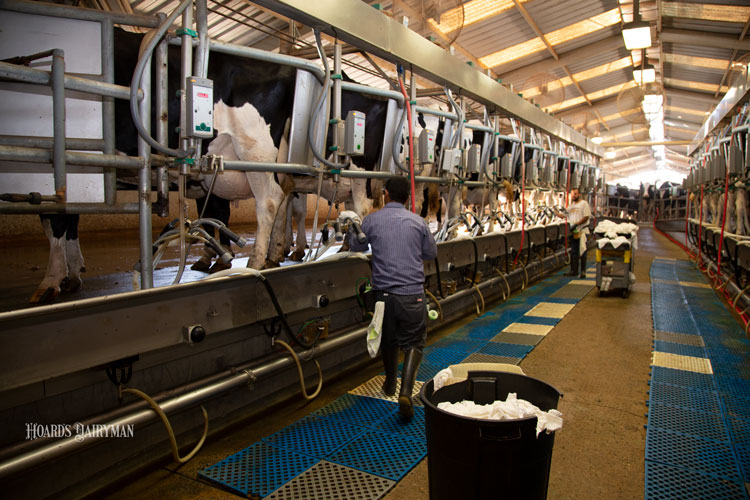
It’s no secret that milk quality has improved enormously over the last few decades. In fact, DHI records indicate that the national average for somatic cell counts has fallen from 304,000 cells/mL in 1995 to 191,000 cells/mL in 2018. That’s an overall drop of nearly 37 percent in 23 years.
Of course, there are many varying factors we can thank for this improved milk quality. Better cow comfort, milking training protocols, and treatment options have all reduced the incidence of mastitis on dairy farms.
When we think about it, each of these elements come back to the same principle: Understanding exactly what somatic cells and mastitis are has helped us learn how to best control these infections. Research into mastitis has moved ahead leaps and bounds in the last generation, and in a recent National Mastitis Council webinar, J. Eric Hillerton outlined how we can still benefit from those discoveries today.
In 1971, mastitis field trials conducted mainly in the U.S. and UK led to the development of the five-point plan we’re probably still familiar with (at least informally) to help control somatic cell counts on the farm. It includes:
1. Milking machine testing
2. Teat dipping
3. Dry cow therapy
4. Treating clinical cows
5. Culling chronic cases
How have these steps remained relevant, and how have they changed? According to Hillerton, some modern flexibility with these strategies creates valuable tools for producing the healthiest milk.
1. Milking machine testing: Hillerton believes parlor equipment is often the number one cause of infections on dairies, and with irregular sanitation or maintenance, this may very well be true. It’s important to ensure inflations are changed every 1,000 to 1,200 cow milkings, the vacuum and takeoffs aren’t harming teat ends, and the washup cycles are running at the appropriate temperatures. With new technologies and parlor systems emerging each year, producers must stay on top of how to keep that daily harvesting equipment running smoothly and safely.
2. Teat dipping: We know that the effectiveness of good teat dips cannot be understated in cleaning teats of bacteria and preventing infection. Since 1971, predips have become more widely used in addition to the sealing power of postdips. Choosing an appropriate product and teaching good coverage methods is vital. This is an area where most farms do well.
3. Dry cow therapy: This point of the plan has probably undergone the most scrutiny, at least in the past few years, as it has become more selective. Mastitis rates in the 1970s warranted treating every quarter of every cow with an antibiotic at dry-off, but it’s no longer true that 60 percent of cows have an existing infection when they go dry. In today’s world of antibiotic resistance, using only a teat sealant may be a judicious treatment option. Each farm must evaluate its current mastitis situation to determine what is the best plan of action.
4. Treating clinical cases: In a similar vein, antibiotic treatment for sick cows has changed. We still want to be able to cure clinical cases if at all possible, but by utilizing milk culturing, we can have a better idea of how to best fight the specific pathogen in each case. Again, mitigating antibiotic use to what is most effective can improve recovery rates for cows that have mastitis.
5. Culling chronic cows: Removing problem cows from the herd is the same now as it was decades ago. Perhaps we can be stricter now; Hillerton recommends culling everything that becomes infected more than three times. These repeat offenders may contribute more issues, and often it doesn’t pay off to treat them.
Good milk quality is something we all must continue to work toward, but we are on the right trend. “So many people are doing their job so well,” said Hillerton.








